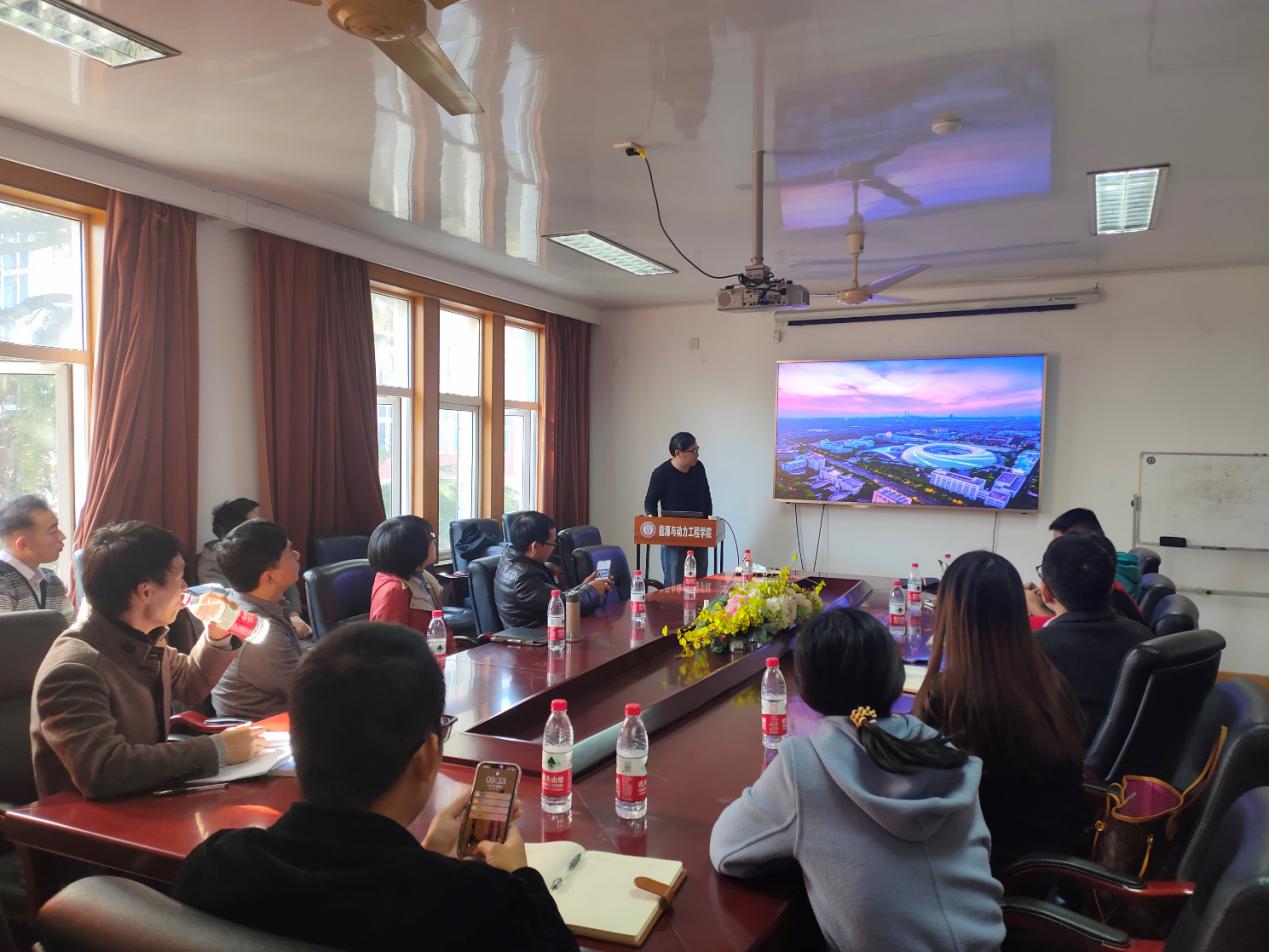On November 12, 2021, with the invitation of the School of Energy and Power Engineering, Zheng Jiang, research fellow of Shanghai Advanced Research Institute of Chinese Academy of Sciences, came to the university to for academic communications, and gave a report on "Application of synchrotron radiation in energy research" for teachers and students.
Introduction on Zheng Jiang
Doctor, research fellow, doctoral supervisor. At present, he is the director of Department of Materials and Energy Science Research of Shanghai Advanced Research Institute of Chinese Academy of Sciences, the overall director of Engineering Spectrum of Shanghai Synchrotron Radiation Facility, the assistant manager and director of users of Line Station Project of SSRF, and the director of XAFS line station. He graduated from the National Synchrotron Radiation Laboratory of the University of Science and Technology of China in 2005, and received his Ph.D. degree. The main work of Jiang focuses on: 1) the design and construction of synchrotron radiation X-ray spectroscopy line station; 2) the development of advanced synchrotron radiation X-ray spectroscopy methods, including X-ray emission spectroscopy, high-resolution absorption spectroscopy, time-resolved spectroscopy and in-situ spectroscopy, and the establishment of a systematic research system for energy materials from single atom to cluster. Until now, he published over 300 papers on famous journals such as Nature, Science, Nat Commun, JACS, ADV Funct Mater, Angelw, etc., and were selected as the world's highly cited scientists in 2020.
Content summary
The synchrotron radiation source has the characteristics of ultra-high brightness, wide band, continuous adjustable energy and high collimation, hence it plays an important role in energy research. Shanghai Synchrotron Radiation Facility, as the third generation synchrotron radiation source, has been stably and publicly operating for 12 years. It has developed a series of advanced characterization methods, such as three-dimensional imaging of materials and energy catalytic X-ray spectroscopy, which greatly promoted the development of the energy field. One of the key issues in energy catalysis is the rational design and preparation of efficient catalytic materials. However, a single chemical method cannot meet the evolution of energy catalysis, which needs to be understood from the atomic and electronic levels. The synchrotron radiation X-ray spectroscopy method including X-ray emission spectrum and X-ray absorption spectrum (Synchrotron Radiation X-ray Spectroscopy, SRXS) is a powerful tool to promote the establishment of the structure-activity relationship of catalysts. Based on the SRXS method, the atomic structure such as coordination environment and electronic structure such as electron spin and orbital splitting of the catalyst are accurately analyzed, thus the active site structure of the catalyst is constructed, which provides direct evidence for the analysis of the reaction mechanism. The report will introduce the basic situation of Shanghai Synchrotron Radiation Facility, the application of SSRF in energy, the advanced energy material spectral characterization platform of SSRF and the development of SRXS method, and summarize the application of SRXS method in electrocatalytic and battery.
Jiang introduced the development of synchrotron radiation source in China and the world, and explained the working principle and application value of synchrotron radiation source. Synchrotron radiation source can be used to measure atomic, molecular, electronic and magnetic structures, which are widely used in chemical materials, biomedical, energy and chemical industries. Jiang’s research work focuses on the analysis of electrocatalytic and battery reactions by using the spectral characterization platform of energy materials and the developed SRXS method, which provides a basis for the application of new energy materials. During the report, teachers and students interacted with Jiang with their respective research directions. Jiang also gave answers to the use of synchrotron radiation sources and related research contents.


Figure 1 Report by Jiang Zheng Researcher

Figure 2 After the report, teachers and students took a photo with researcher Jiang Zheng

